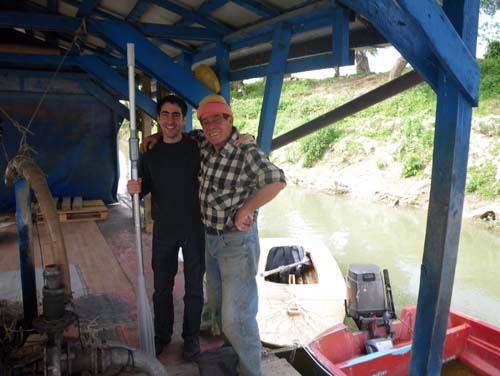
The boat was waiting at the Anaconda – and Cesare handed her over along with a sponge to bail out the water.
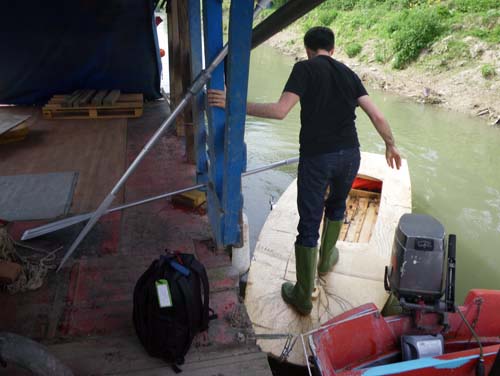
Eric Bianchi had agreed to come along and help paddle the boat to Ostia.
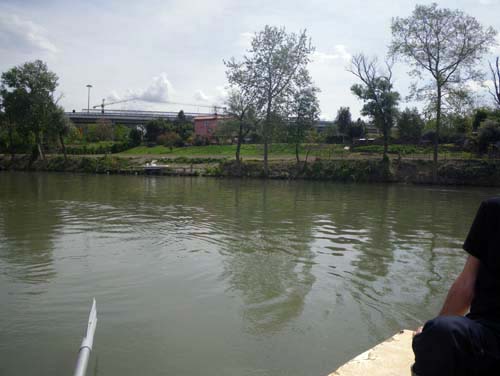
We pushed off and started to glide downriver.
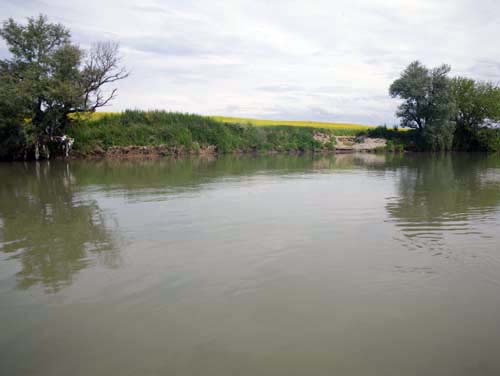
It was a bright day and as we floated South we saw the banks getting lower and wide apart.
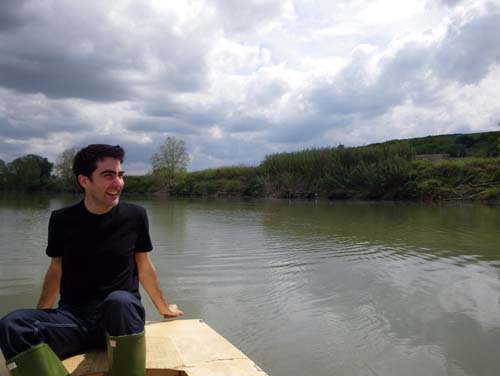
We talked about art and music and our friends from the American Academy.
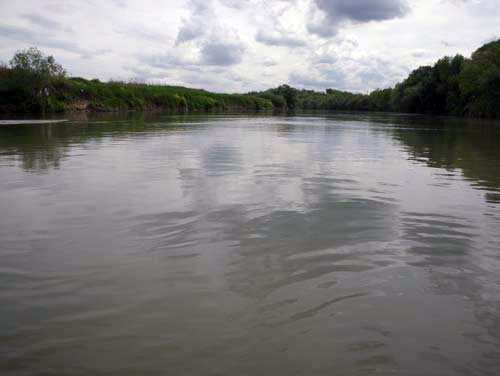
“We don’t even have to paddle.” said Eric.
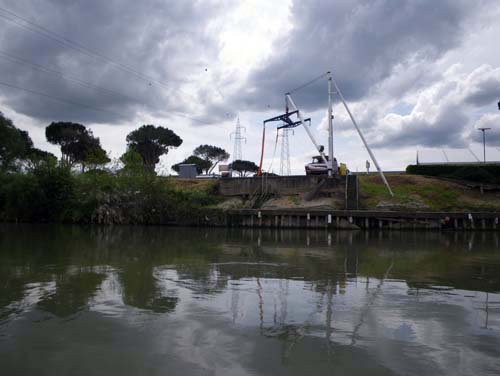
“Where are we?” we both wondered.
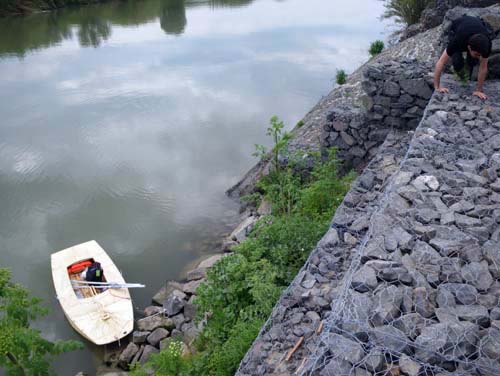
We pulled up to see what things looked like over the bank.
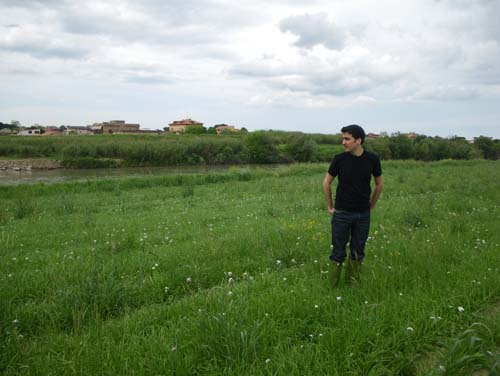
We could see the airport in the distance and Eric recognized the Alitalia hanger.
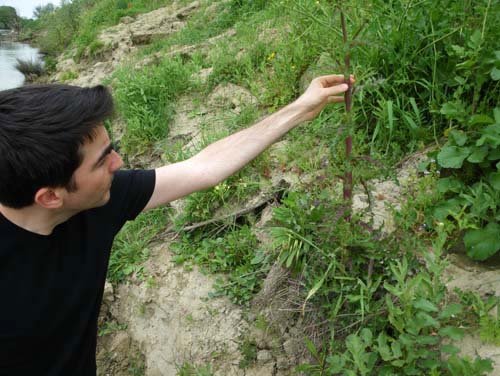
“Hey, I think I have had this for lunch at the Academy.” said Eric.
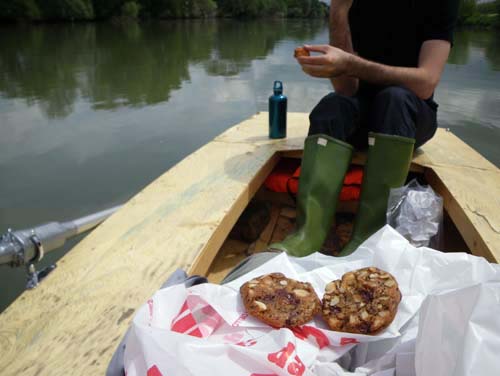
Speaking of lunch, we took out our picnic lunches and ate. It was well before noon, but there was not much else to do.
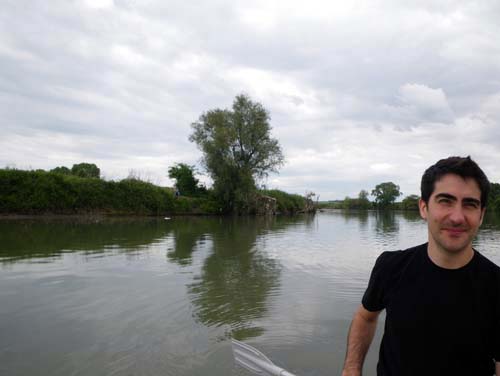
The current slowed down,
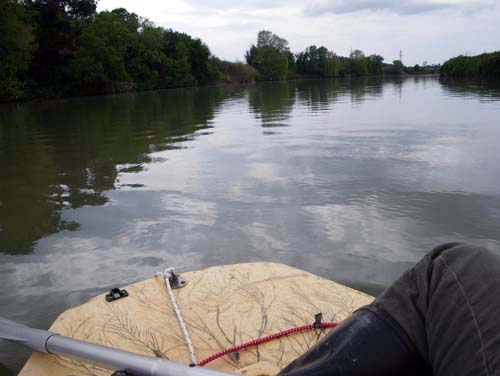
and we drifted for a few hours.
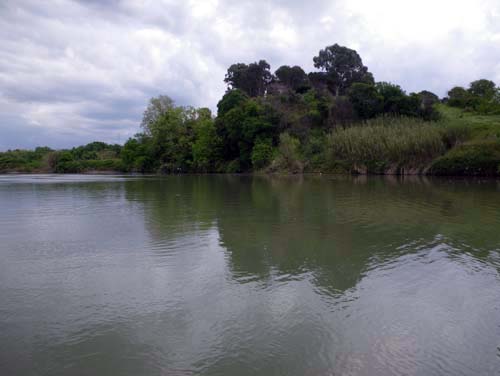
“What do you think that is?” I asked, “a mediaeval fortress?”
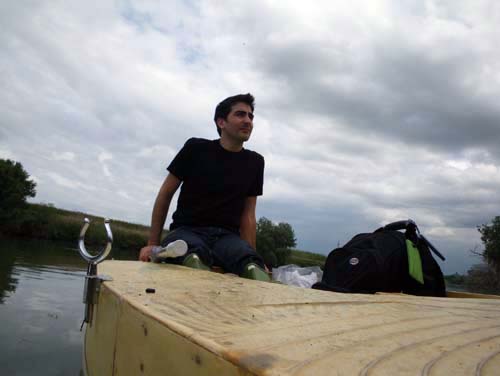
“At least from the 1800’s.” said Eric.
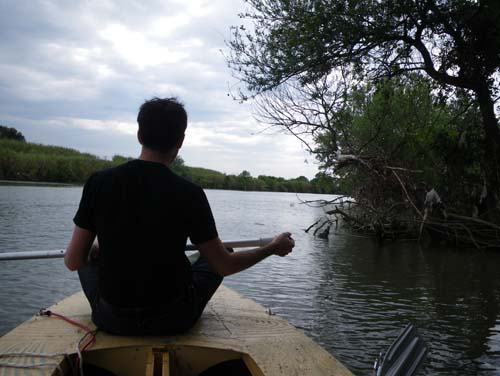
“I must say,” said Eric, “For the river that gave rise one of the greatest cities in the world, its not much of a river.”
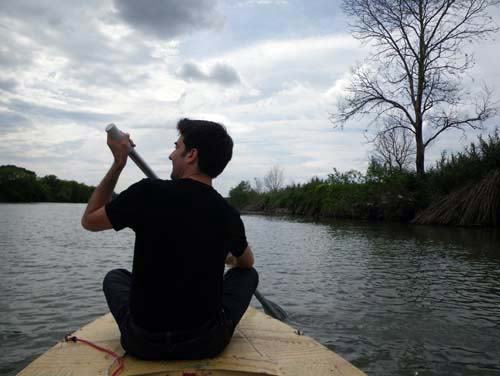
“What would you expect of such a river?” I asked.
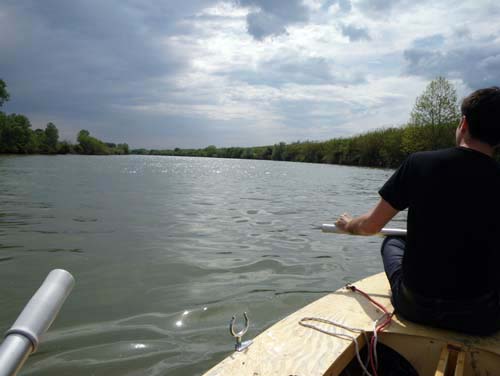
“Oh I don’t know.” said Eric. “Perhaps to be plied by giant pleasure-craft, lined with beautiful buildings…”
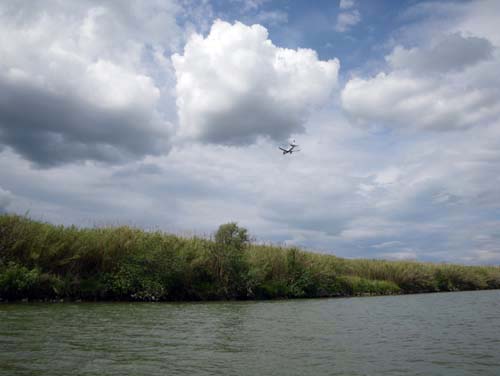
With all the flooding and silting, the Tiber does seem to defy a certain development.
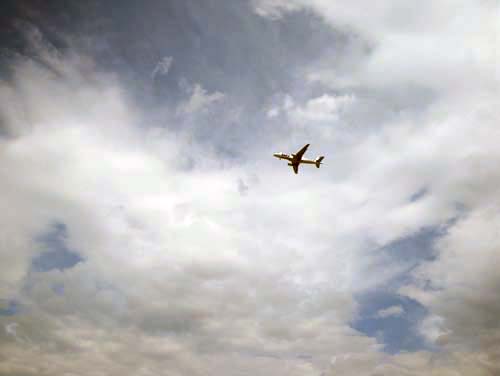
Soon we were right under the flight path of Fiumicino airport.
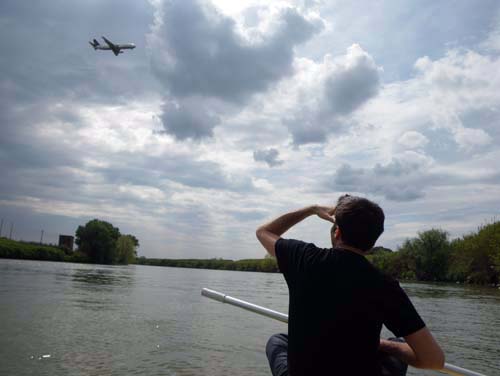
Every few minutes a huge jet liner soared overhead. “You can set your watch by it.” said Eric.
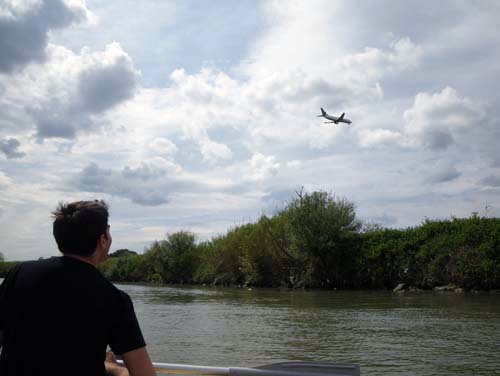
We could smell the jet feul and see the landing gear. “Now we are really in the middle of nowhere,” said Eric. Its true, the flight path of a major airport always is a kind of nowhere. And yet here was a crossroad between the ancient water rout to Rome and a new thoroughfare; bringing hundreds of tourists to the city every minute. “They are probably looking down on us rowing by in a boat, thinking that they are going back in time.” we thought.
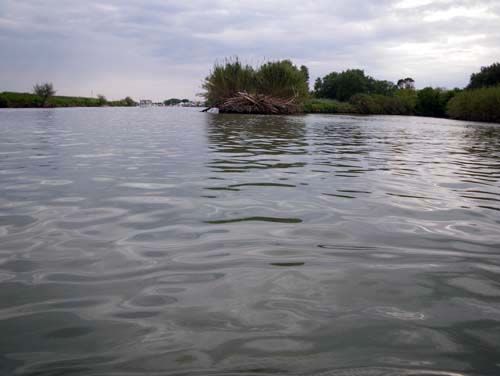
We came to a split in the river.
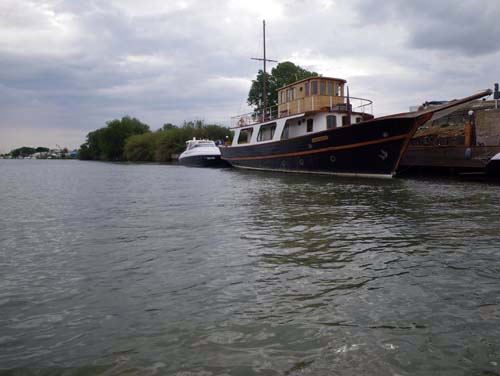
The division of the Tiber and the Fiumicino canal forms the Isola Sacra.
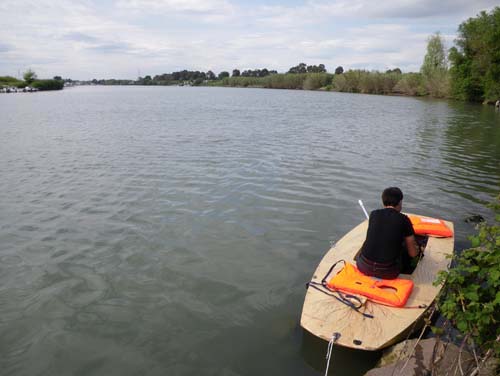
Eric spotted the back of the museum at Ostia Antica, and we stopped at a rough dock.
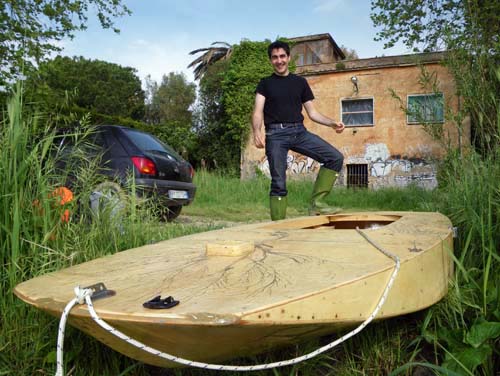
We pulled the boat up the rocks.
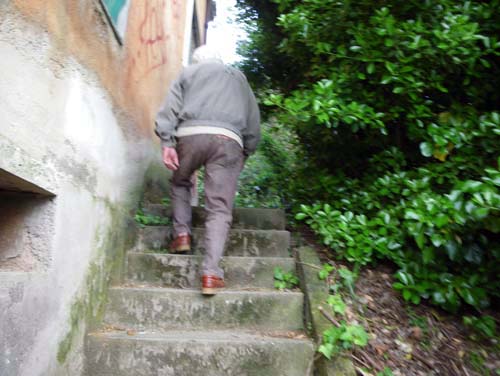
Someone fishing on the bank showed us a spot he thought we could stash the boat.
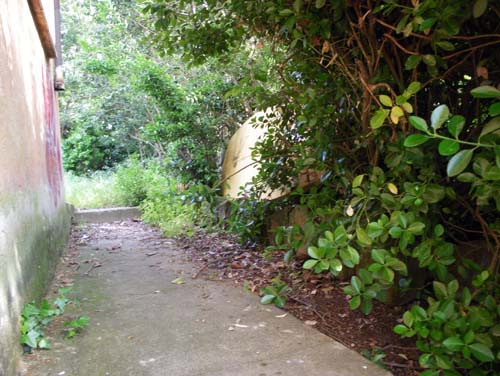
Behind an old pump-house. He thought it would be ok for a few days.
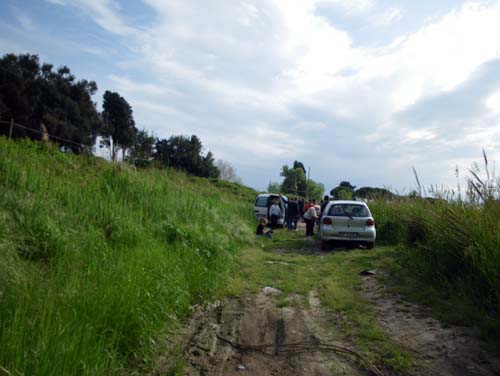
As we walked away, we saw a group of people filming something down by the water. They were getting ready to shoot a scene and it sounded like a fight.
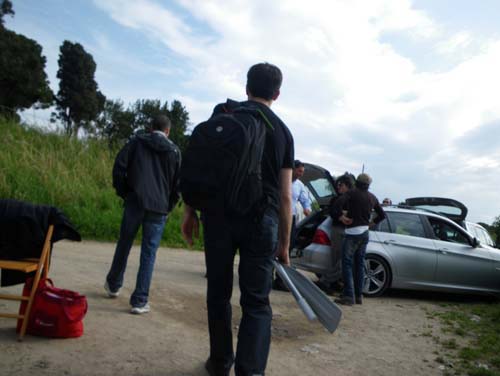
“What the hell are these people doing?” I asked Eric.
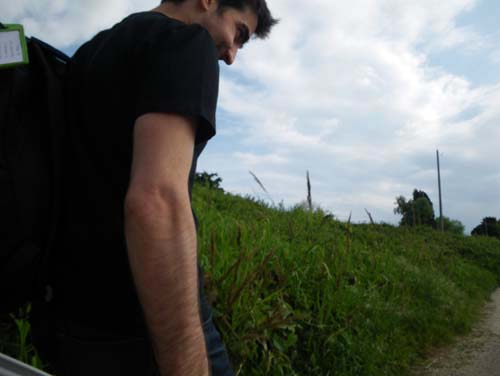
“It’s funny that two groups of people can be thinking the very same thing about each other.” said Eric, as we walked straight up from the bank with paddles and galoshes.
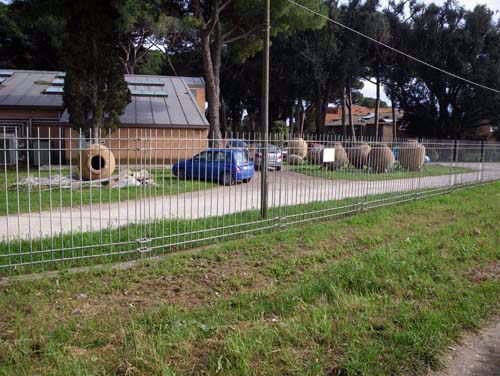
We had arrived at Ostia Antica,
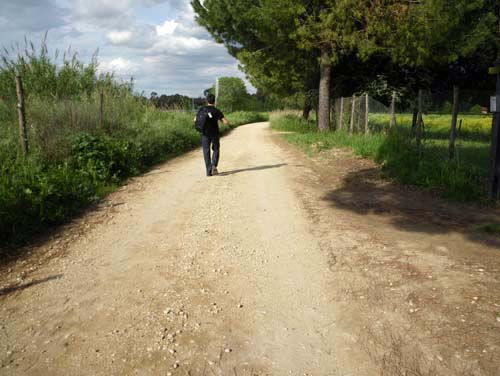
the ancient port of Rome.
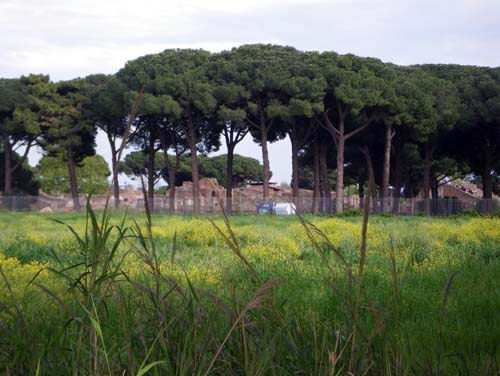
Through the feilds we could make out the old amphatheater and market warehouses.
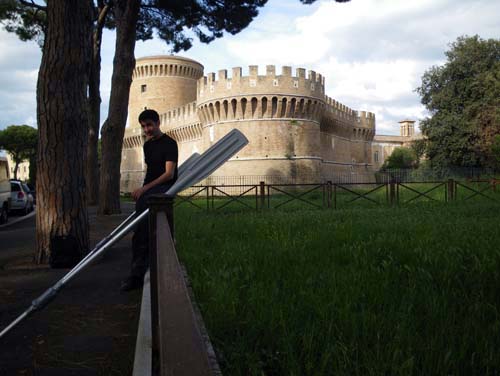
On the way back to the train, we decide to stop at the mediaeval town of Ostia.
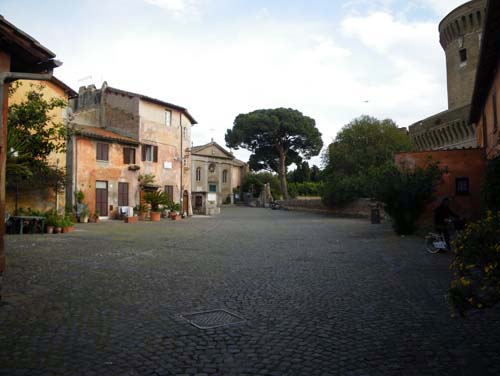
‘Ostia mena anticha’ Eric calls it. Ostia not-as-old. (as the anchient one)
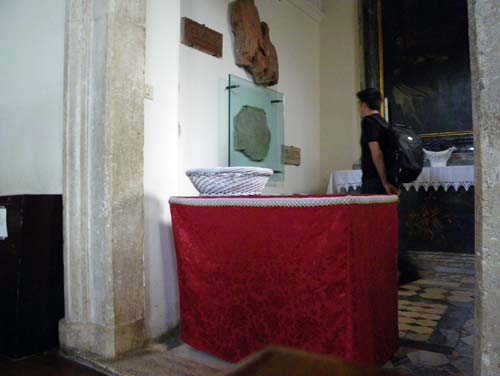
Eric showed me the gravestone of St. Monica, the mother of St.
Augustine. She died at Ostia in 387.
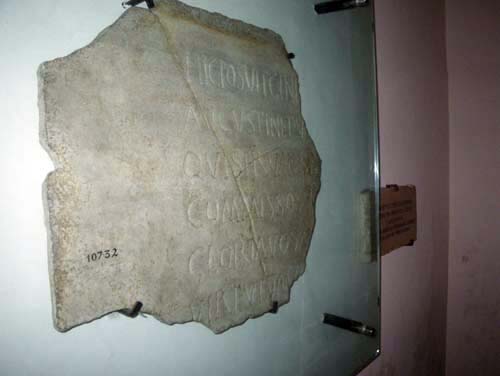
Some kids dug it up close to here in the 1940’s, and based on a record of its inscription, historians were able to identify it.
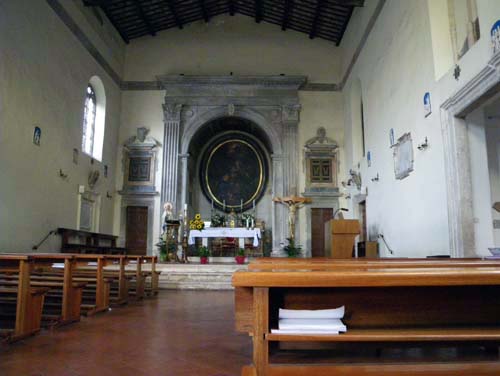
“Why didn’t they take it to a museum,” I asked. “I think at some point they just started leaving things where they found them. Also, it would have been very important to the Catholic Church.” said Eric.
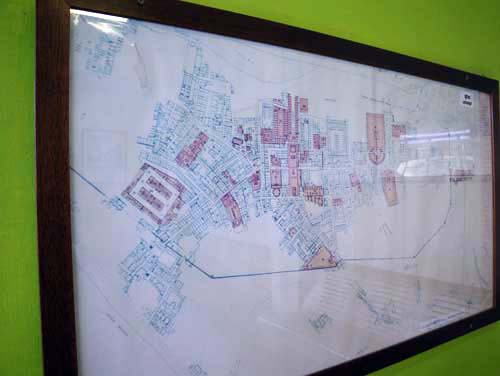
At the train station I saw a map of Ostia Antica, and could see where the Tiber comes close by the ruins. As the silt from the river pushed the coastline away from Ostia, the port became abandoned. I hoped that the boat would be alright there for the night.
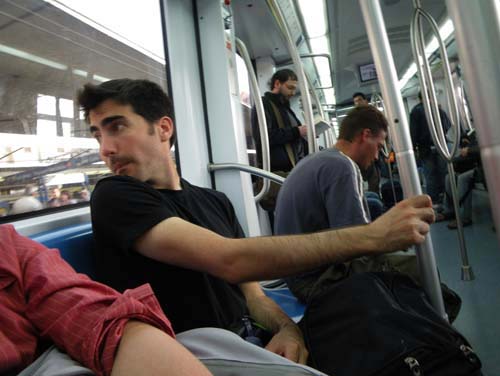
↑ Return to Top of Page ↑